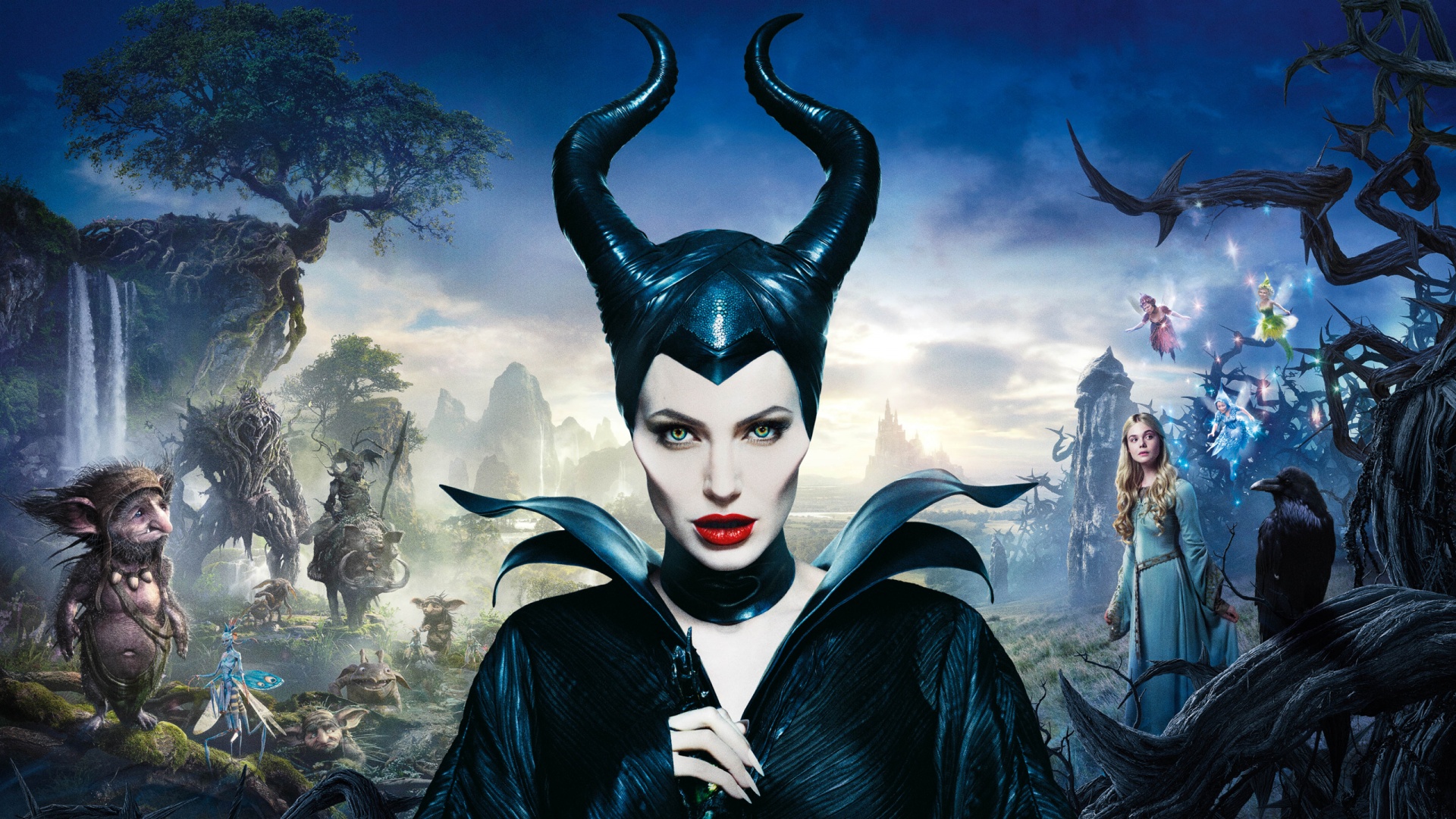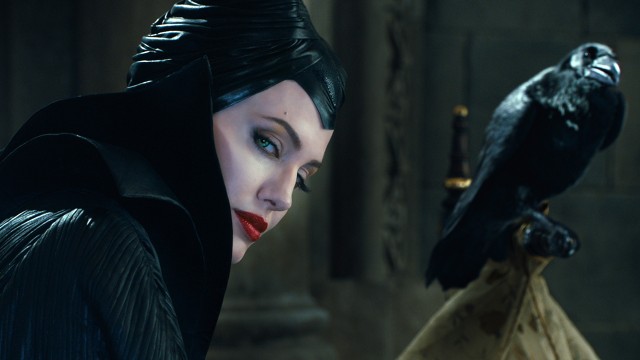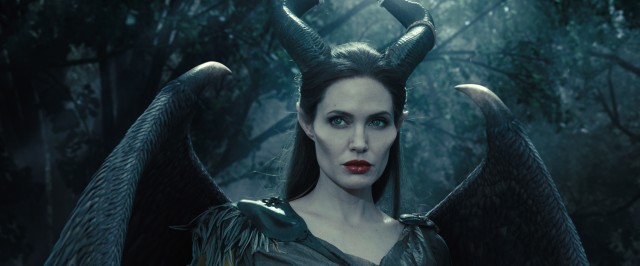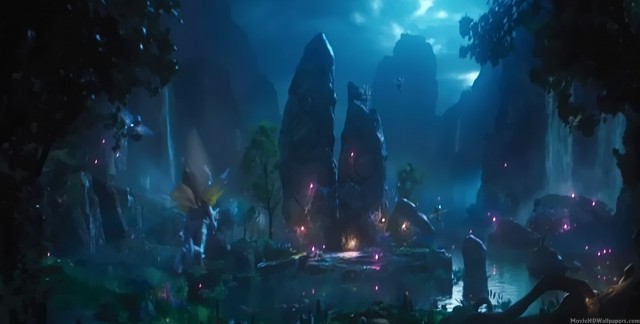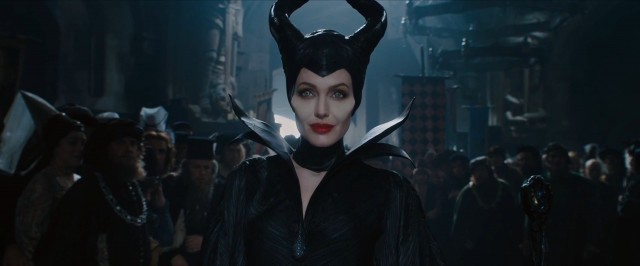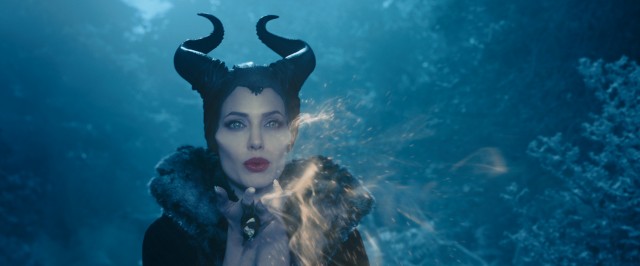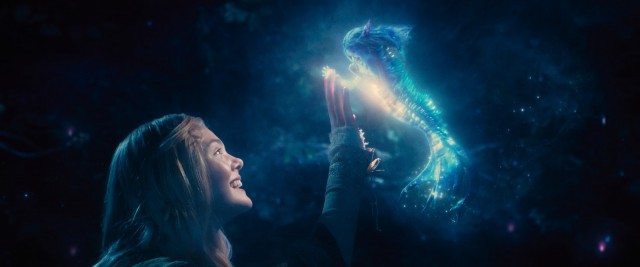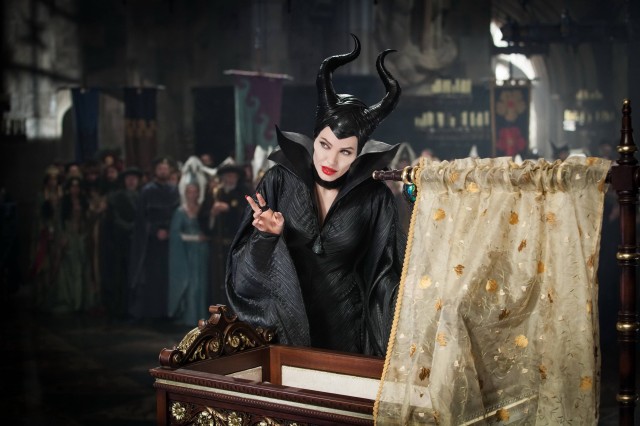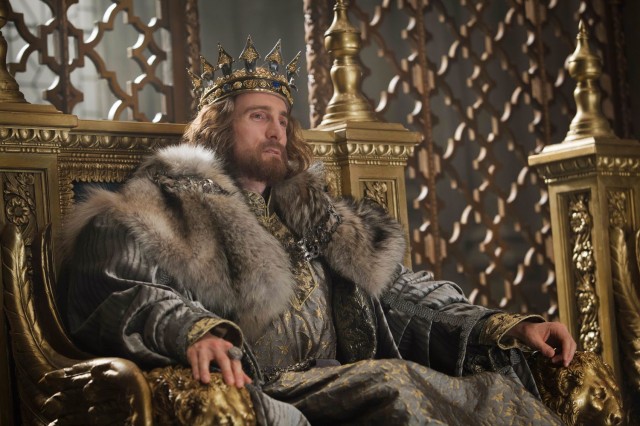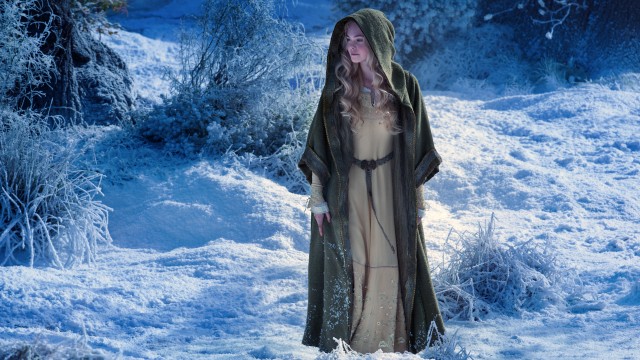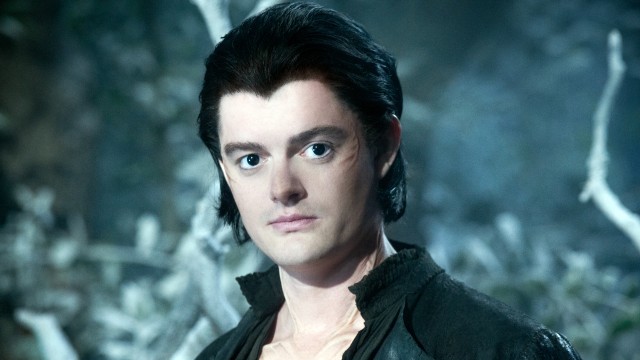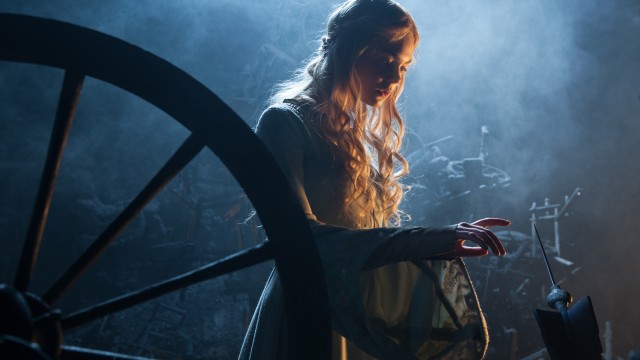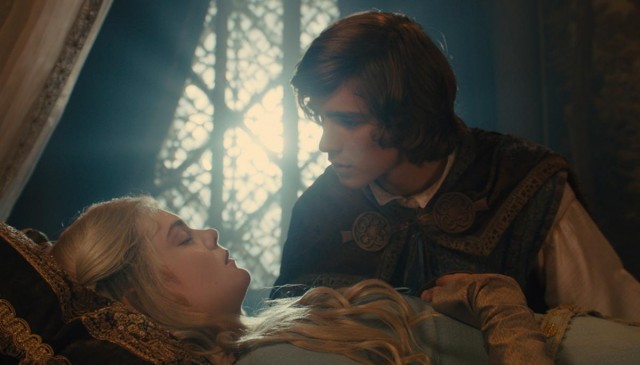Maleficent as a character is arguably one of Disney’s most beloved and iconic villains, perhaps the most beloved and iconic villain of the lot! There were villains before her, but something about Maleficent’s character has especially resonated with the Disney faithful. Perhaps it was her frightening power, or her imposing presence, or her proud, blunt villainy in cursing an infant child to die on her sixteenth birthday. Perhaps it’s a combination of these things!
Whatever the case, the idea of an entire movie built around one of Disney’s most widely adored villains was an exciting prospect upon its announcement. Given the big shoes it has to fill however, does Maleficent succeed at re-telling an especially memorable Disney tale, in this case 1959’s animated classic, Sleeping Beauty?
Well, sort of. Maleficent has enough good intentions and positive qualities to make it appealing to open-minded people who enjoy Disney movies. Unfortunately though, there are also frustrating missed opportunities and frequent tonal confusion that drag down what deserved to be a better movie than it is.
It’s still good, but Maleficent would have been excellent, had it committed to one tone, and not ultimately wimped out of fully turning Disney convention on its ear, something that the studio did far better last year with the stellar Frozen. Instead, Disney enthusiasts will have to make do with what’s still a solid movie, albeit a frustratingly uneven one.
If there’s one indisputable high point of Maleficent, it’s the titular character herself. Angelina Jolie is perfectly cast in the title role, delivering a standout performance that is equal parts grand, terrifying, thought-provoking, mysterious, and even surprisingly funny at times. Jolie is the one performer here that best effectively appeals to both children and adults simultaneously, since she displays the necessary presence without being too unfriendly or irredeemable, and never loses the core emotional appeal of her character’s story in the process.
One of the key marketing hooks behind the movie is filling in the gaps of Maleficent’s backstory from Sleeping Beauty. As beloved as Maleficent is, she was a rather one-dimensional villain in that film, seemingly motivated by a simple invitational snub, or just because she had nothing better to do than cause trouble for the kingdom of humans.
In this new movie however, Maleficent is a much more complex character. She begins as a loveable and benevolent fairy that befriends a human urchin, Stefan, the same Stefan who would eventually grow into the human king. It’s through Stefan’s actions that Maleficent is betrayed and pushed to the dark side, eventually becoming the more recognizable villain persona that we all know, albeit with proper motivations and character progression this time.
As much as Maleficent paints itself as a tie-in to Sleeping Beauty however, it is an unabashed re-telling of the story, and is essentially a lesser remake of that movie with the perspectives flipped around. Maleficent still commits some vile acts in this movie, not least of which is the all-important curse on Princess Aurora that is left fully intact with only minor dialogue changes from Sleeping Beauty, but now, she’s portrayed as more of a shadowy anti-hero than a true villain.
Instead, King Stefan is fully the villain now. Sharlto Copley’s haunting, twitchy and paranoid performance in the role is another high point in Maleficent, granted, but it’s kind of a shame that Maleficent ultimately makes the character as frustratingly one-dimensional as Maleficent herself was in Sleeping Beauty. Stefan never has any clear path of logic toward how he treats Maleficent and uses her to achieve his obsession with the throne. He’s basically just an evil person, and is even worse than Maleficent ever was in Sleeping Beauty when it comes down to it.
Stefan is perhaps the worst casualty of the script then, since the movie doesn’t bother to actually give him a personality beyond being, “The new villain.” This also makes it difficult to believe that Stefan would suddenly and irrationally turn on the fairy kingdom after his positive history with Maleficent as a child, yet despite that heel-turn, entrust his only daughter to three imbecilic fairy folk, who are now called Knotgrass, Flittle and Thistletwit in Maleficent, rather than Flora, Fauna and Merryweather like in Sleeping Beauty. Why Disney felt this pointless name change was necessary is a bit baffling.
While the character arcs of Maleficent and Stefan are meant to be deeper and darker, aimed more at adults for their cautionary tale of greed and revenge, the three fairies are the characters most obviously meant to appeal to children. They’re played up to quarrel and act like idiots much more than they ever did in Sleeping Beauty, and now that’s pretty much all they do. While they’ll occasionally say something funny, most of the time, they’re just annoying, and at times even horrifying in their ineptitude with caring for a little girl!
It’s not the fault of Imelda Staunton, Lesley Manville or Juno Temple, who play Knotgrass, Flittle and Thistletwit respectively, since they do what they can with the script they’ve been given. They can only do so much however, since they’re written to be one-note imbeciles, and that’s how they will come across to anyone who is older than six or so.
Fortunately, we don’t see much of these three compared to most of the other characters. In fact, even Aurora herself barely registers as a character beyond being a smiling, oblivious plot device, and no, she’s never called, “Briar Rose” in Maleficent. Elle Fanning does what she can in the part of the sixteen-year-old Aurora, and she’s certainly likeable and cute in the part, but she’s another actor with ultimately little to do. There is a potentially cute story arc where Aurora mistakenly believes Maleficent to be her fairy godmother, yet another way that Disney is trying to playfully poke at their own convention, but it still doesn’t make Aurora feel like anything more than a way to move the plot forward.
Even more frustrating is that Prince Phillip, a pivotal character in the original movie, barely has more than a walk-on part, and ultimately contributes nothing of value to the story. His presence is just another way for Disney to try and challenge their own reputation for fairy tale adaptations, and he might as well not have been in Maleficent at all.
Indeed, whenever the movie starts moving away from the core conflict between Maleficent and Stefan, and tries to flesh out elements of the other supporting characters from Sleeping Beauty, it starts immediately becoming less interesting. Maleficent’s side at least manages the one reasonably appealing supporting character in Diaval, this version’s variation on Diablo, Maleficent’s crow companion.
In Maleficent, Diaval is rescued and turned into a human by Maleficent, and Sam Riley plays off of Angelina Jolie quite well as the snarky, but loyal shapeshifting man-servant. He also doubles as giving Maleficent someone to talk to and share her thinking with, since she’d otherwise be spending most of the movie talking to herself. It’s a bit funny, but the changes to what was otherwise just a visual flourish to Maleficent’s character in Sleeping Beauty are ultimately the most effective and successful changes that Maleficent has to offer with its cast.
Despite everyone else however, it’s still Angelina Jolie holding the whole piece together. That’s good, as we spend the most time seeing things from Maleficent’s perspective, and Jolie is largely what salvages what would have otherwise been a total mess without her.
It’s kind of a shame that Maleficent is ultimately afraid to make its title character truly irredeemable, since it’s ultimately afraid to fully market itself to adult Disney fans who watched Sleeping Beauty growing up, the initially presumed target audience, before it became a typical family audience. Yes, this predictably means shoehorning in a Disney-approved happy ending, no matter how little sense it makes.
If you can forgive the alterations from the personalities established by Sleeping Beauty though, Maleficent’s journey as a lead character is nonetheless interesting and fulfilling in its own right.
It’s a bit odd that Maleficent initially tries to be as faithful as it can to Sleeping Beauty, but then completely abandons that notion in the second half to tell an entirely new story. Even if it is just the second half however, it still means that Maleficent can’t be taken as a tie-in piece to Sleeping Beauty, and is best treated as its own independent story.
Again, Maleficent herself is what makes that story worth telling as well. There’s a very clear, concise path in her beginning as a strong, benevolent child, being hurt and betrayed to begin her journey to a scorned villain, then stopping short of being purely evil by the innocence and trust of Aurora, whom she watches from afar, and eventually begins to interact with directly.
Obviously, this is a different character than the purely evil villain in Sleeping Beauty, namely a more complex one. At the very least however, the story succeeds at challenging our notions of evil and villainy in Disney’s works. One of Maleficent’s key themes is that evil is not born, it’s created, and is oftentimes preventable, were it not for the selfishness and short-sightedness of certain people. This theme only resonates halfway, since the movie doesn’t do a great job of explaining Stefan’s actions or thought processes for the most part, simply being happy to paint Stefan as a villain in Maleficent’s stead, but with Maleficent herself at least, the morally grey perspective works.
Mostly though, Maleficent’s story focuses more on other themes. The theme of greed is obviously a focal point, and how the wrong ambitions can bring ruin to the world around us. Along with that comes the heartwarming idea that we can learn to love again, even when we’ve had our hearts broken. We are never truly irredeemable, as long as we find reason to believe as we once did, and in using one of Disney’s most famously irredeemable villains as an allegory to this idea, Maleficent especially works.
When it doesn’t work however is when it’s forced to re-tread the key plot beats of Sleeping Beauty. The lone exception is the all-important scene where Maleficent shows up at the princess’s christening to curse Aurora, which is mostly done wholly faithfully to how it was presented in Sleeping Beauty, and is an absolutely brilliant and impactful highlight scene in Maleficent!
Beyond that however, Disney purists will likely be very frustrated at how little the other scenes from Sleeping Beauty resonate. While something noble and progressive is attempted with the arc of Aurora’s curse, the curse itself feels like it’s of little consequence, and isn’t even a factor in the movie’s somewhat clumsy climax. Likewise, the romantic arc between Aurora and Prince Phillip is completely devoid of meaning in Maleficent, to the point where it will be downright infuriating to fans of the classic Disney princesses and romances.
As hard as it is to do, you must set aside Sleeping Beauty to fully enjoy Maleficent. It’s a movie that absolutely must be taken on its own merits for ideal enjoyment, but at least its title character is well-realized in a more morally complex tale, even if it’s at the expense of the other Sleeping Beauty personalities.
To add insult to injury, Prince Phillip isn’t even featured in the climax, which merely involves a deranged Stefan and his army trying to kill Maleficent at the behest of Stefan’s paranoia, even after Aurora has already been awakened from her enchanted sleep.
These are all contributing factors as to why Maleficent’s climax feels clumsy and frustrating. There’s some neat visual moments, but the final clash with Stefan and his army feels neutered in what’s supposed to be a movie that’s accessible to children on at least some level. Worse still is the fact that even 55 years later, the final battle here isn’t nearly as exciting or memorable as the final battle was between Phillip and Maleficent in Sleeping Beauty. That’s a pretty large fumble for what’s otherwise an emotionally stirring and visually stunning movie like Maleficent!
Robert Stromberg, Maleficent’s helmer, is a first-time director, having mainly worked on production design in all of the previous movies he’s been involved with. This would likely explain the fact that the movie offers a polished visual package, but feels uneven and clunky in terms of a lot of story scenes.
Stromberg still manages to direct certain scenes quite well, especially since he seems to work especially effectively with Angelina Jolie. The cursing scene taken almost verbatim from Sleeping Beauty is, again, superb, and many of the dialogue scenes involving Maleficent interacting with Stefan, Aurora and Diaval alike are shot pretty well.
Ultimately however, Stromberg seems to suffer from a predictable bit of George Lucas syndrome, being seemingly more interested in directing the sets than the actors, and leaving Jolie to pick up the slack for everyone else. Sure, the sets look amazing, but many of the actors’ best efforts can’t salvage some of the script’s weaker moments, nor the less set-driven scenes that come off as a bit sleepier than they should. Only Jolie seems to transcend these limitations regularly throughout Maleficent.
James Newton Howard composes the soundtrack of Maleficent, which is about what you would expect it to be; High orchestra, haunting, melancholic tunes for its title character, and a Disney-approved suite of tracks for a live-action, fantasy-themed movie. Frankly, it doesn’t leave much of an impression.
Most noteworthy however is that Angelina Jolie herself hand-picked Lana Del Rey to do a cover of the original Sleeping Beauty’s key song, “Once Upon a Dream.” Del Rey’s cover obviously doesn’t quite compare to the original, but it’s pretty good, and quite respectably realized, considering the daunting task of covering a main song from such a beloved Disney classic!
Beyond the highlight performance of Angelina Jolie, another main draw of Maleficent is definitely its visuals. This is a gorgeous movie all-around, wonderfully realized in terms of its ambience and fantastical wonder! During both the more light-hearted scenes and the more dark, dreary scenes alike, Maleficent never ceases to be captivating to watch!
One potential issue is that some of the creatures and darker sequences might be a bit frightening to very small children, but for adults, Maleficent is a movie that will constantly engross you fully in its world. It’s a wonderful realization of a world that already looked quite sharp in Sleeping Beauty back in 1959, only now, everything has been taken even further to expand the landscape with new locations.
Maleficent herself is also impeccably realized by the combined efforts of both Angelina Jolie and the wardrobe department. Disney originally pushed to highlight the movie with Jolie’s extensive beauty, but I’m happy that the actress insisted on being faithful to the look of the title character’s original animated incarnation. Her high cheek bones, gnarled horns and ghostly pigmentation all contribute to a wonderful live-action realization of the character, who appears both imposing and tragic, while still having an air of fantastical charm. There is some emphasis still given to Jolie’s beauty, namely via Maleficent’s wide eyes and ruby-red lips, but thankfully, much of the ghastlier elements of the character do remain here.
A movie with this much fantastical atmosphere definitely begs to be seen in 3D as well, and I’m happy to report that the 3D effects in the movie are quite good. They heighten the immersion of the incredible set work considerably, and really help Maleficent leap off of the screen. It’s still not essential if you’d rather watch the movie flat in 2D, but if you enjoy 3D movies, both the standard digital 3D cut and IMAX 3D cut are very engrossing, and well worth the price of admission. Personally, I’d recommend at least a standard digital 3D showing to get the full effect of the movie’s world.
Regardless of how you view it however, Maleficent is a breathtaking movie that is packed with incredible visual design, from its creatures to its landscapes to its sense of magic and wonder. This should come as little surprise, since its director has contributed to many of the most visually stunning blockbusters of our time in some shape or form. As a result, Maleficent definitely stands with The Amazing Spider-Man 2 as being one of this Summer season’s most successfully visually ambitious live-action movies so far.
For all of its beauty, charm and good intentions, Maleficent isn’t all it could have been. Both the directing and writing occasionally let down the incredible vision behind the movie, with Angelina Jolie left to salvage what would have wrecked the movie in lesser hands.
Fortunately, considering that this is her big comeback after a four-year hiatus from acting since 2010’s The Tourist (if you don’t count her voiceover work in 2011’s Kung Fu Panda 2), Jolie has proven here that she definitely hasn’t missed a beat in that time. She carries Maleficent effortlessly as the title character, and fans of the actress will definitely enjoy this movie, since it really shows off Jolie’s incredible charisma and appeal, even when portraying a character ingrained in most of our minds as an irredeemable villain.
Disney fans however will be a bit more frustrated here. Maleficent stumbles as a re-telling of Sleeping Beauty, but it rights itself enough to be watchable as a character piece, and an Angelina Jolie starring vehicle. It’s certainly not a bad movie, but it will be very uneven to passionate Disney fans in particular.
Bottom line, Maleficent is not a must-see blockbuster for this Summer, and it will probably feel like a let-down to those who expect a certain standard from Disney. If you’re simply looking for a visually arresting, family-friendly fantasy movie though, or are just eager to see Angelina Jolie return to the screen in fine form, it does enough to satisfy, even if the legacy of its title character might have deserved a bit better.

